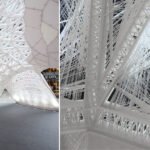Top Cities for Architectural Innovation
- By -Peter
- Posted on
- Posted in Modern Architecture
Have you ever wondered which cities are at the forefront of architectural innovation? From iconic skyscrapers to sustainable urban planning, these cities are setting new benchmarks in modern architecture. Let’s explore some of the top cities renowned for their architectural innovation and cutting-edge designs.
What is Architectural Innovation?
Architectural innovation refers to the creative and groundbreaking approaches used in designing buildings and urban spaces. It involves pushing boundaries, integrating new technologies, and addressing contemporary challenges in urban living.

1. Dubai, UAE
Dubai is synonymous with architectural marvels and futuristic designs. The city boasts iconic structures such as the Burj Khalifa, the world’s tallest building, and the sail-shaped Burj Al Arab Hotel. Dubai’s skyline is a testament to its ambition and willingness to push architectural limits.
Transition: With projects like the Dubai Creek Tower and the Museum of the Future underway, Dubai continues to lead in architectural innovation globally.
2. Singapore
Singapore is renowned for its sustainable urban planning and innovative architecture. The city-state combines green spaces with high-rise buildings and utilizes smart technologies to enhance livability. The Marina Bay Sands integrated resort and the Gardens by the Bay are prime examples of Singapore’s architectural prowess.
Transition: With ongoing developments like the Punggol Digital District and Jewel Changi Airport, Singapore remains a hub for architectural experimentation and sustainable design.
3. Shanghai, China
Shanghai has rapidly transformed into a global hub for modern architecture and urban development. The city skyline features a blend of futuristic skyscrapers and historic landmarks. Notable structures include the Shanghai Tower, the Oriental Pearl Tower, and the Shanghai World Financial Center.
Transition: As Shanghai continues to grow, innovative projects such as the Bund Finance Centre and the Shanghai Planetarium showcase its commitment to architectural innovation and urban renewal.
4. Copenhagen, Denmark
Copenhagen is celebrated for its sustainable urban planning and commitment to environmental sustainability. The city integrates green infrastructure, cycling lanes, and pedestrian-friendly designs into its urban fabric. The Gemini Residence and the 8 House are examples of Copenhagen’s innovative approach to residential architecture.
Transition: With ambitious goals like becoming carbon-neutral by 2025, Copenhagen leads in creating livable, environmentally friendly urban spaces through architectural innovation.
5. New York City, USA
New York City remains a global epicenter for architectural innovation and experimentation. The city’s skyline is a testament to its rich architectural heritage and continuous evolution. Iconic landmarks such as the Empire State Building, One World Trade Center, and the High Line demonstrate New York’s architectural diversity and creativity.
Transition: With ongoing projects like Hudson Yards and the revitalization of neighborhoods like Brooklyn’s waterfront, New York City continues to shape the future of urban architecture.
6. Tokyo, Japan
Tokyo blends tradition with modernity, showcasing innovative designs in architecture and urban planning. The city’s skyscrapers, such as the Tokyo Skytree and the Mode Gakuen Cocoon Tower, reflect its technological prowess and forward-thinking approach to city planning.
Transition: Tokyo’s commitment to earthquake-resistant architecture and sustainable development makes it a leading city in architectural innovation and urban resilience.
7. Rotterdam, Netherlands
Rotterdam is known for its bold and experimental architecture, shaped by its post-war reconstruction and forward-looking urban policies. The city features innovative buildings like the Cube Houses and the Erasmus Bridge, symbolizing its commitment to architectural innovation and urban regeneration.
Transition: With ongoing projects such as the Depot Boijmans Van Beuningen and the redevelopment of the Rijnhaven district, Rotterdam continues to redefine urban living through architectural creativity and sustainability.
Conclusion
In conclusion, these cities stand out for their visionary approaches to architectural innovation. Hence, pushing boundaries in design, sustainability, and urban planning. From the skyscrapers of Dubai to the sustainable neighborhoods of Copenhagen, each city contributes uniquely to the global landscape of modern architecture. As these cities continue to evolve and embrace new technologies, they inspire architects and urban planners worldwide to create cities that are not only functional but also innovative and inspiring.
Choosing the right city for architectural inspiration can ignite creativity and drive towards creating sustainable, efficient, and aesthetically pleasing urban environments. Let these cities inspire you to imagine and build the cities of tomorrow, today.



